Text and photos: Gustasp & Jeroo Irani
Ananda in the Himalayas
THE Maharaja of Tehri Garhwal looked down at us benignly from his gilded portrait that hung on a wall of the elegant, chandeliered drawing room of the Viceregal Palace, part of the Ananda in the Himalayas destination spa complex. The current maharaja’s father had built the palace to entertain Lord Mountbatten, the then Viceroy of India, and his entourage.
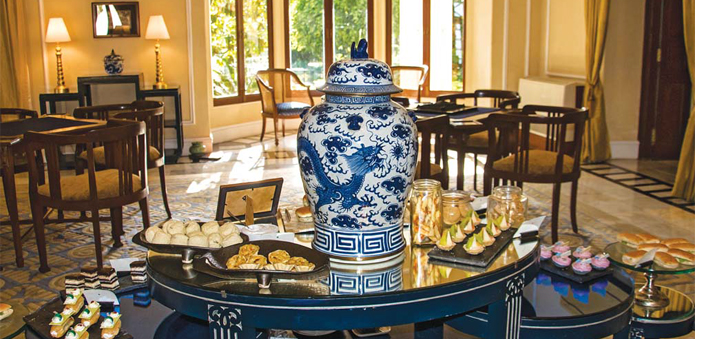
We were attending High Tea, hosted by the general manager of Ananda, Nikhil Kapur, who yet carries on with this royal tradition. Period furniture, sepia-tinted portraits of famous guests, moulded ceilings and fire places… we felt enveloped in an atmosphere of refinement and venerable tradition. Prior to the High Tea, we were welcomed with an aarti ceremony and a signature health drink in the reception of the spa complex which is also located in the Viceregal Palace.
In front of the Viceregal Palace rises the maharaja’s petite palace of beige and red terracotta, and at the rear of the two palaces and just a buggy ride away are the dedicated spa facilities (a generous 24,000 sq ft spa), a low-rise building of guest rooms hewn into a hill, villas and the restaurant of Ananda, as well as an outdoor pool – all snuggle amidst a sal forest. The rooms, suites and villas reflect the subtle colours of nature that surround them, and the stunning views that they command – of the Rishikesh Valley or of the palace or of the gardens.
At the award-winning Ananda, we saw history and royaltradition combine in a heady mix with the ancient Indian wellness regimens of Ayurveda, Yoga and Vedanta and modern spa-style pampering. “Ananda is located in Dev Bhoomi, the Abode of the Gods”, said Kapur, gesturing to the expansive parkland that girdles his wellness outpost. “This is where sages and rishis have meditated for millennia and where Ma Ganga begins her descent into the plains. This region vibrates with positive energy”, he said. He related how the visiting masters of Reiki, Past Life Regression, Abdominal Massages, Cranio- Sacral therapy et al who hold special workshops and sessions at Ananda, have corroborated the fact that this leading destination spa is located in a sacred space and does not even need spiritual cleansing!
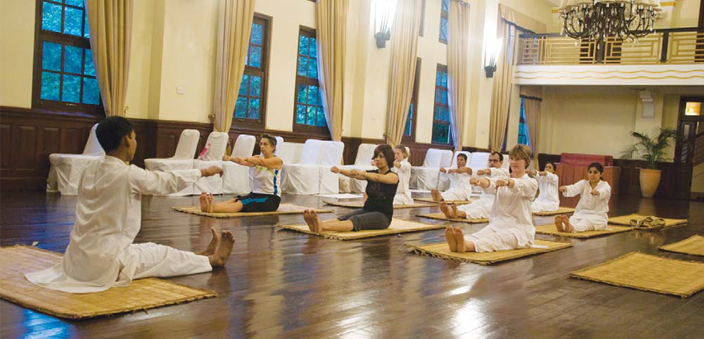
Much of this energy comes from the past, we were told, thanks to the royal family and their cordial relationship with their subjects. Not surprisingly, the oil used to light the first lamp at the holy shrine of Badrinath, when it opens in June after months of being snow-bound, is mixed and blessed in a ceremony at the palace where the maharaja is in attendance. After the ceremony, the maharaja meets his people in the adjacent courtyard.
Yes, pomp and pageantry are part of the cocktail that Ananda serves its guests. The focus of the Billiards Room in the palace, for instance, is a 100-year-old billiards table, the oldest in India, which has witnessed many leading political personages of the time play there! The present-day, light-filled Viceregal Hall, now used for conferences, was earlier the location of the maharaja’s skating rink! The wood-panelled library adorned with the royal crest is another charmed space where we would often relax after a spa session or some yogic contortions. And perhaps most poignant of all is the bagpiper who plays his melancholy bagpipe at Sunset Point and the strains float downwards into the valley even as the fiery orb takes a bow.
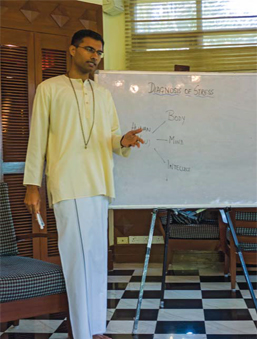
And what is beguiling is that the entire spa experience has been infused with life-affirming joy. As a luxury destination spa, Ananda guides its guests to redefine their lifestyles, but does not police them. Want to go birdwatching in the 100-acre grounds? Prefer to head off on a trek in the Shivaliks, the foothills of the Himalayas, or attend a moving soulful Ganga aarti in Rishikesh? River rafting anyone? Intrigued by the art and science of Ayurvedic cuisine? Attend some of the cooking demos held by the spa’s talented chefs. All this can be crammed in between some spa therapies, personal trainer interludes, one-on-one-yoga sessions, meditation and Vedanta classes based on the ancient wisdom of the Vedas…
The cornerstone of Ananda’s philosophy is: “We don’t cure, we heal, cleanse, relax and revitalise!” Indeed, Ananda has over 80 body and beauty treatments on offer, garnered from the Ayurveda, Oriental and European systems of holistic health, which aim to de-stress, detoxify and cleanse, as well as relax and address the problem of weight gain. There are no invasive therapies either nor any pretensions to cure everything under the sun! Yet, repeat guests come as frequently as thrice a year and leave behind glowing tributes in the guest book. A consultation with the Ayurvedic doctor, often preceded by a chat on the telephone or online, prior to arrival, an assessment of a guest’s physical condition by pulse reading and a discussion of his or her ailments and health issues is followed by a prescriptive list of treatments, customised diet and wellness routine. If you wish to avoid the more rigorous methods of toxic elimination, Ananda is flexible on that score, too.
According to Ayurveda, mind, body and spirit are intertwined and need to be treated in unison. Additionally, the universe consists of five primordial elements – air, ether, fire, water and earth. The human body is a combination of these elements and the three principal body types – vatta, pitta and kapha – are a combination of these elements. When one of those dominates in a person to an extraordinary degree, imbalance may be created and it’s this imbalance that Ayurveda seeks to correct.
From then on, wellness is fast-tracked with a sheaf of therapies in which age-old powders, oils and poultices are used to ease joint pain, relax the muscles, stimulate circulation, etc. The highly trained therapists kneaded, pummelled and massaged us into total submission of our doshas and out-of whack systems. Outside the therapy room, the tall sentinel bamboos rustled and whispered to each other while post the treatment, as we emerged from a trance-like state and walked back to our room, evocative décor touches registered on our consciousness – the Buddha statue with an orange wrap-around; a marble fountain; mandala paintings, diyas… all subtly conveyed sublime messages of spirituality and wellness.
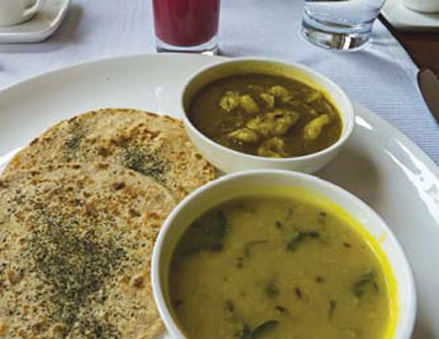
Our reward after yoga and meditation sessions and work outs and morning stretches in the state-of-the-art gym was the exquisitely presented and created Ayurvedic meals that were pleasing to both the eyes and the palate. We dined at candle-lit tables placed on the wood deck outside the restaurant, in the lee of ancient trees and within hand touching distance of timeless views. No matter that lunch and dinner commenced with ingesting a powder made of 32 herbs which had to be swallowed along with a lime and melon juice concoction! But we consumed three, exotica-studded meals a day without guilt because the number of calories was mentioned alongside, and the menus were crafted to balance our doshas!
A sampler: Green peas and mint gazpacho with herb drizzle; organic vegetables and tofu filled pancake Tian with tomato sauce and mayo relish would precede the main course of carrot and green pea risotto, with parmesan shavings and fresh herbs. The dessert would be a coffee panna cotta, with wild berry coulis! All of it concocted with raw material from Ananda’s organic farms near Dehra Dun. We would leave our table satiated yet feeling as light as air! Oprah Winfrey, Prince Charles and a number of celebrities have sipped Ananda’s elixir of life. And they had left, feeling 10 years younger, fitter and perhaps even wiser. And we, too, have embarked on our wellness journey, fully aware that there will be no looking back.
Fact File
The closest airport is at Dehra Dun from where Ananda is a 45-minute drive away.
Ananda offers a variety of packages to suit different needs – there are the Getaway Packages that include a two or three-night stay, including breakfast and dinner, and a choice of spa experiences; special Couples Connect packages of three and five nights and also options for brides to be.
There are Wellness Packages too which include Weight Management, Rejuvenation, Detox and Yoga Programmes. Apart from Ayurveda, try their exotica like the Tibetan massage or a Swedish massage.
The Ananda Active Programme is an innovative creation which includes treks, river rafting as well as spa experiences chosen to support and rejuvenate your outdoor schedules. For more information, visit: www.anandaspa.com
Kalari Kovilakom
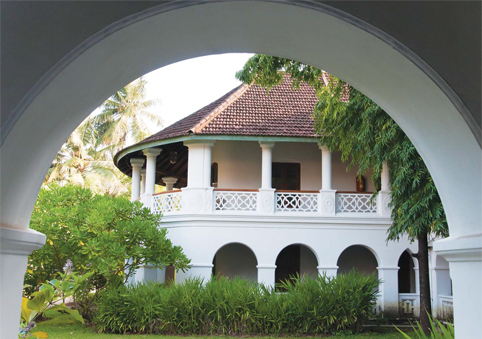
WE got an insight into what the monks of yore might have felt on entering a monastery as we stepped into Kalari Kovilakom, the palace of Ayurveda. Perhaps a mixture of dread and anticipation? Of stepping into the unknown and sinking into a bottomless void?
Our fears were unfounded. An aura of spirituality and warm friendliness clings to Kalari Kovilakom, located in the 19th century palace of the Vengunad dynasty in Kollengode, Kerala, the heartland of Ayurveda. Indeed Kalari is billed as the doorway to the union of mind, body and spirit.
“Please leave your world here”, urged a sign at the entrance. And we did just that! We left our worldly cares at the imposing gates of the palace even as we shed our identities by way of our clothes, shoes and our cell phones and donned crisp white kurta-pyjamas and canvas slippers instead. We joined the other guests from across the world who flitted around like celestial beings in white. They too, like us, were in search of health and fitness, the Ayurveda way.
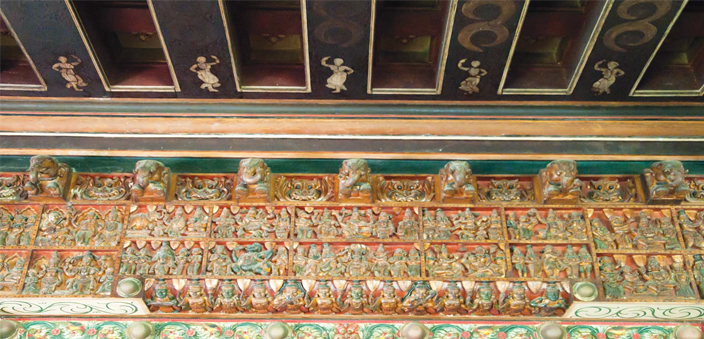
As befits a monastery or palace of Ayurveda, we had to adhere to a cloister-like discipline which was strangely liberating and comforting… Minus newspapers and TVs, the age-old addictions of tea, coffee and of course alcohol, we felt like we had cut off our moorings in the real world. In the hushed silence of the palace, we surrendered our minds and bodies to Ayurveda, the 5,000 year-old Indian health regimen that helped us balance our doshas.
After a consultation with an Ayurvedic doctor and a pulse reading, our doshas were determined and a plan of therapies, customised diet, yoga and meditation sessions was drawn up. Soon we found ourselves retreating every morning and afternoon to the comforting ambience of the therapy room, shrouded in greenery from the outside. After a foot massage and a prayer, we would lay down on the wooden Ayurveda table. Two experienced therapists would rub and massage medicated oils into our bodies and pound our joints with herbal poultices and our Third Eye seemed to open with shirodhara or the oil-drip treatment.
As we lay there and surrendered ourselves to the expert ministrations of our therapists, we pondered on the meaning of life and our existence thus far. Candle-lit meditation sessions, chanting, early morning yoga stretches and cultural performances filled our evenings. Soon we began to feel like we were living in a perfect world and cavorting with the Gods of health and fitness. Our world had shrunk to within the confines of the palace and nothing could touch us. We felt like superior beings who had mastered the art of detaching ourselves from temporal concerns.
Kalari Kovilakom has to be taken on its own terms, we were told; this is not a spa, nor hotel, nor even a typical Ayurvedic hospital and a minimum stay of 14 days is mandatory. One’s stay can be extended to 21, 28 days or more. In this world devoid of tea, coffee, meat, alcohol and even afternoon naps, life was reduced to its purest, simplest form. We would be woken up at around 5.30am when the sun had yet to peep over the horizon, for our morning yoga session. In a thatched lamp-lit pavilion, we would limber up with gentle yoga asanas and then pad up eagerly to the palace for breakfast.
There, staff in crisp white uniforms with gold-bordered shawls would serve us like we were guests of royalty. (After all we were living in a palace!) Our hands would be washed with warm water poured from a gold-plated, spouted samovar and breakfast would be served – a hefty helping of a solitary fruit – like a papaya or water melon – as prescribed by the Ayurvedic doctor on our daily diet chart. No amount of fantasising and salivating at the thought of crisp dosas and soft puffy idlis or a spicy omelette would help to quieten the pangs of hunger that would be clawing at our innards, once we had completed our morning consultation with our doctor and the prescribed therapy.
Around noon, a bell would chime and resonate across the vast lawns, seemingly in synch with our growling stomachs. We would rush to tuck into lunch, served on an open-sided, wrap-around verandah of the palace, shaded from the hot sun that poured its beams on the green lawns that flared beyond the patio. Two signs “Let us not disturb the silence”, and “Don’t let the silence disturb you”, kept rumblings of hunger and overt signs of rebellion against the strict regimen under control! Warm water infused with cardamom or cumin would accompany our simple meal of a salad, three types of vegetables served in shining copper thalis and washed down with butter milk. The subtly spiced meals are customised according to a guest’s bodily requirements, and in keeping with royal tradition, these are cooked in stone and copper vessels.
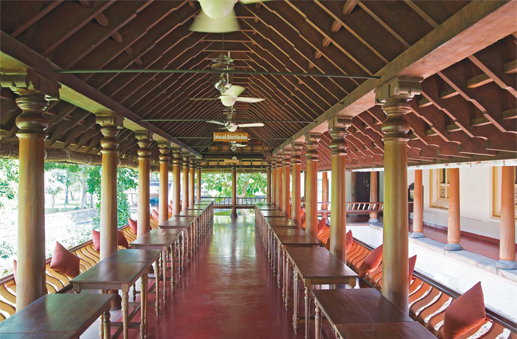
In the course of our stay, we savoured snake gourd curry, ripe banana curry, vegetable stew, yam, long beans, barley dosa, pumpkin soup, carrot-tomato soup – all very healthy and balanced, as good nutrition is the key to restore a diseased body to its natural state of wellness. Relish your food and eat calmly and consciously, we were counselled.
After fourteen days, we feared that we would be reeling from serious caffeine deprivation and become comatose! But strangely, our spirits lightened as though we had discarded a crutch on which we had leaned on for far too long. “The greatest lesson I learnt here,” said a guest as she was leaving, “is that one’s digestive system is the key to good health; hence awareness of what to eat is crucial…We often eat out of boredom or when sitting in front of the TV. I used to have 10 cups of coffee a day. Now as I step out into the real world, I’m sure that I can do without a single cup,” she said. Her arthritic companion could walk without limping after three weeks of therapy, and was sorry to leave the healing confines of Kalari, the next morning.
We slipped easily into the natural rhythm of the place and its healing practices. As the first rays of the sun exploded on the complex of teak-pillared buildings with charming, sloping red-tiled roofs, guests would gather to perform a Surya Namaskaar and then gather at the pond to feed schools of eager fish, a form of Karma Yoga or “selfless work.” At sunset, the palace would take on magical overtones. It was the loveliest time in Kalari when, satiated with our massages, wholesome diet and suffused with a feeling of wellness, we would tune into the call of birds roosting for the night and the shrill cry of a peacock would blend with soft wind chimes.
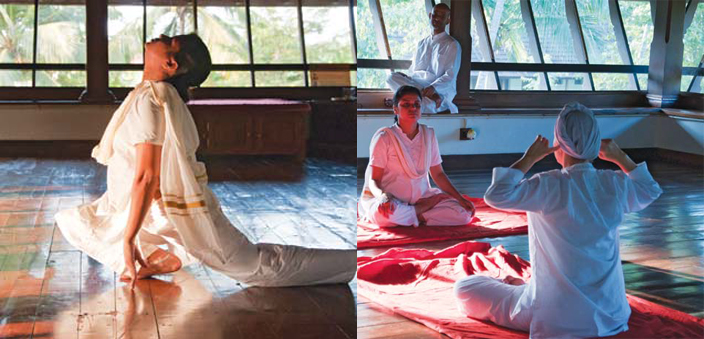
Suddenly, the place would be filled with classical music. Yes, every night after dinner artists and dancers would perform for guests in the central courtyard of the palace. And then silence would engulf it like a warm embrace. Oil lamps would flicker to life and one would be reverentially placed near the statue of a royal ancestor set in an alcove. A wise king and statesman, he is said to be keep silent, benign vigil over the palace.
So does Dhaatri Valiya, Rani of Vengunad, the queen who built the palace…her statue at the bottom of a finely carved wood staircase and glowing portraits seemed to follow guests wherever they went as though urging them to continue on their journey of wellness! The Queen had with great foresight constructed the palace on a sacred site that was once a kalari – a training ground for Kerala’s ballet-like martial art, kalari payattu.
Even today, the staff, particularly the therapists, continue to practise kalari to boost their stores of positive energy which is then transmitted to guests during therapy. It is even believed that curative energy fields converge underneath the palace ground, for rishis used to meditate at this spot, eons ago.
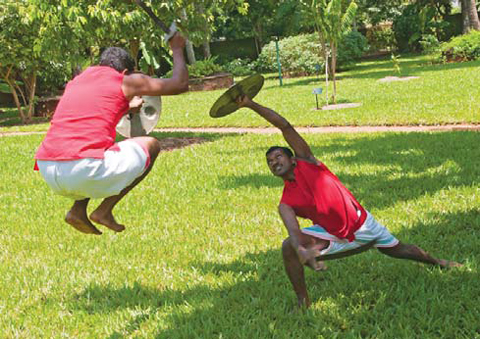
Indeed so therapeutic is the site that way back in time, it is whispered, a prince with a skin ailment from a neighbouring kingdom, was told to bathe in the spring waters of the mountains of Kollengode. He did and was cured! Prince Dharmavarman stayed on to found a kingdom – Vengunad or the land of the venga tree. The venga tree, incidentally, has healing properties.
When we woke up on our last morning, the sun had risen in a glorious palette of colour, daubing the sky in multiple hues. The vastu-compliant palace is located in the Western Ghats and early morning mist was banded around the verdant bellies of the hills. We felt an ineffable sense of loss and sadness at our imminent departure. We bid goodbye to the staff who had become good friends, retrieved our shoes and donned our work- a-day clothes and fractured identity once again. We felt like the world was surging around us to meet us head on, but we were ready to meet any challenge or googly it would throw at us. As we reclaimed the footwear we had surrendered when checking in, our senses were on red alert while physically we felt on top of the world.
As the gates of the palace closed with a resounding finality behind our car, we had an inexplicable desire to jump out of the vehicle and go back to the safe secure haven that we had just left behind. Silently, we resolved to return some day to its holistic, healing embrace.
Kalari Kovilakom, located in Kollengode in Kerala’s Palakkad district, is a two and a half hour drive from Cochin International Airport and an hour and a half away from Coimbatore airport.
The palace has 18 heritage suites, 10 treatment rooms in a separate block and qualified Ayurvedic doctors and therapists. An organic garden with Ayurvedic herbs, a wellstocked library, yoga, meditation and a pillared hall for cultural performances make this a self-contained world.
For more information, visit: www.cghearth.com

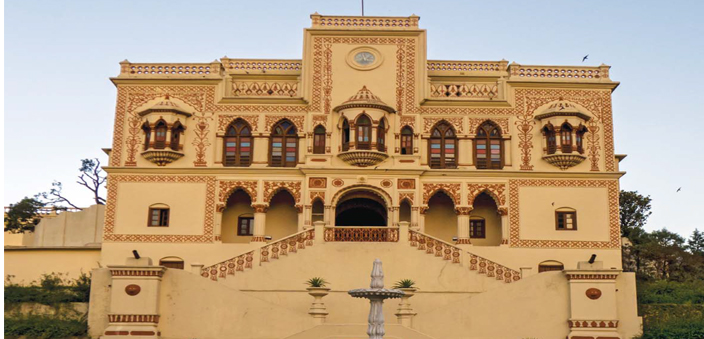
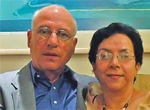 [/column]
[/column]